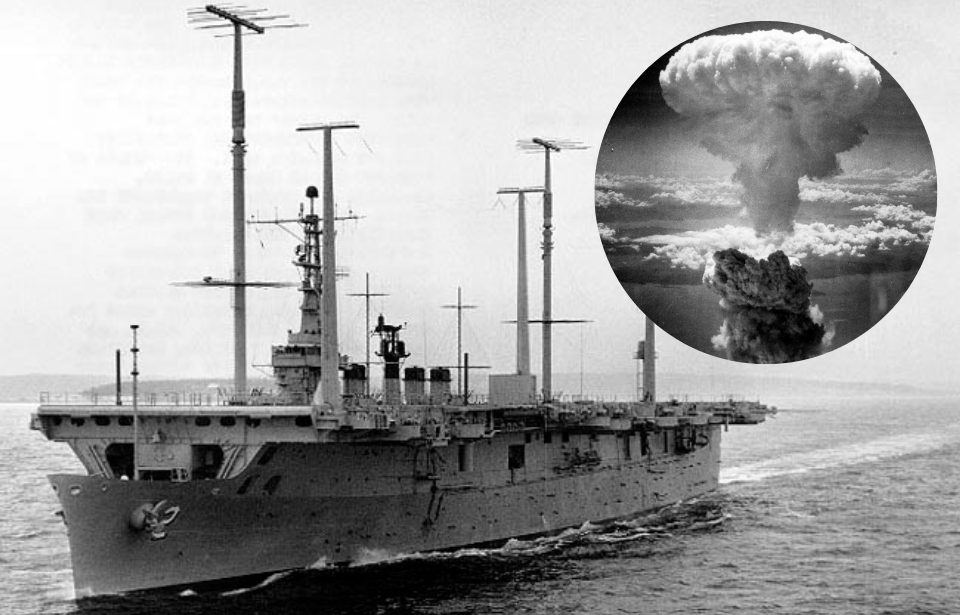During the height of Cold War paranoia in the 1960s, the U.S. government feared that a surprise nuclear strike could decapitate its leadership and cripple national command. To counter that chilling scenario, officials devised the National Emergency Command Post Afloat (NECPA)—a maritime lifeline in a doomsday plan designed to ensure the continuity of government.
This strategy hinged on a three-tiered defense: airborne command centers, hardened underground bunkers, and naval vessels that could stay mobile and out of harm’s way. For the sea-based element, the Navy converted two cruisers—the USS Northampton (CC-1) and USS Wright (CC-2)—into high-tech floating fortresses. Packed with cutting-edge communications gear, war planning facilities, and secure living quarters, these ships were nicknamed “Doomsday Ships” for good reason.
In the event of nuclear war, either vessel could function as a mobile White House, enabling the President or senior officials to command U.S. military and civil operations from the relative safety of the open ocean. It was a sobering reminder of the era’s stakes—and of just how far the U.S. was willing to go to preserve command and control in the unthinkable aftermath of Armageddon.
Continuity of Operations

In the wake of the nuclear arms race following World War II, the U.S. government developed a continuity-of-government (COG) strategy to ensure national leadership could remain functional in the event of a nuclear conflict. The plan was divided into three primary components: land-based command centers, mobile airborne command posts, and sea-based command posts, all designed to keep the government flexible and operational during a crisis.
A secure communications system connected four key command hubs: the National Military Command Center (NMCC), the Alternate National Military Command Center (ANMCC), the National Emergency Airborne Command Post (NEACP), and the National Emergency Command Post Afloat (NECPA).
The NMCC, located at the Pentagon, and the ANMCC, situated in a secure bunker near Blue Ridge Summit, Pennsylvania, were established as fixed land-based centers. Meanwhile, the NEACP operated from specially modified U.S. Air Force aircraft, and the NECPA relied on Navy command ships, which were designed to act as floating command centers.
These naval vessels were kept ready to function as mobile versions of the White House in the event of a national crisis. While they were never had to take on these roles, both Presidents John F. Kennedy and Lyndon B. Johnson used the ships for drills, overnight stays, and during official overseas trips.
USS Northampton (CLC-1/CC-1)
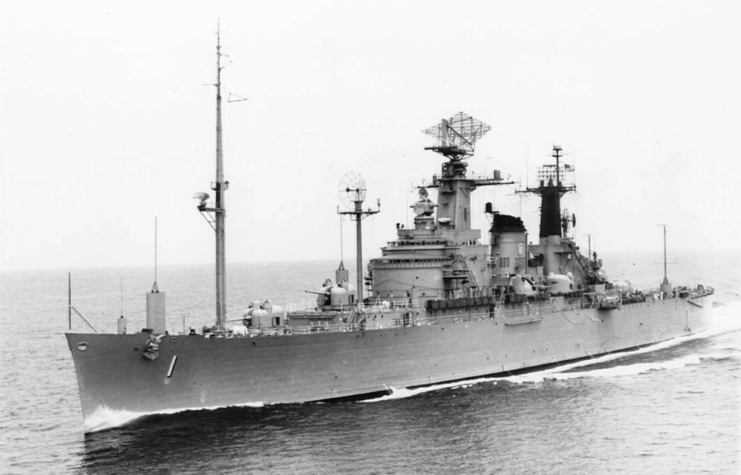
The USS Northampton (CLC-1/CC-1) was launched on January 27, 1951. She was an Oregon City-class heavy cruiser, but had very little resemblance to the other ships in her class. She was heavier, with a displacement of 13,700 long tons, while the rest had displacements of 13,260 long tons. The vessel was also faster, with a top speed of 38 MPH, with the others reaching 37.3 MPH.
Northampton boasted a different armament than the rest of her class. Initially, Oregon City cruisers has nine 8-inch guns in three turrets, twelve 5-inch guns in six turrets and various anti-aircraft guns. After 1953, these were changed. The 8- and 5-inch guns remained the same, and ten 3-inch guns in five turrets were added.
Northampton, however, was designed under project SCB 13 and made into a command cruiser on January 27, 1951, drastically changing the vessel from others in her class. For instance, Northampton had four 5-inch guns and eight 3-inch guns, which were later removed. She also had a considerable amount of antennas and other communications equipment, accompanied by large masts.
Less noticeable, while still significant, the ship had a larger crew. It took 2,000 sailors to control, while just 1,142 were needed for a typical Oregon City cruiser. In this role, she entertained many government officials and dignitaries, including King Baudouin of Belgium and King Olav V of Norway.
Northampton served in this role until 1961. On April 15, she was redesignated CC-1, with the purpose of acting as a floating White House as part of the National Emergency Command Post Afloat. Nicknamed “Sea Ruler,” she served in this capacity until April 8, 1970, when she was decommissioned.
USS Wright (CVL-49/AVT-7/CC-2)
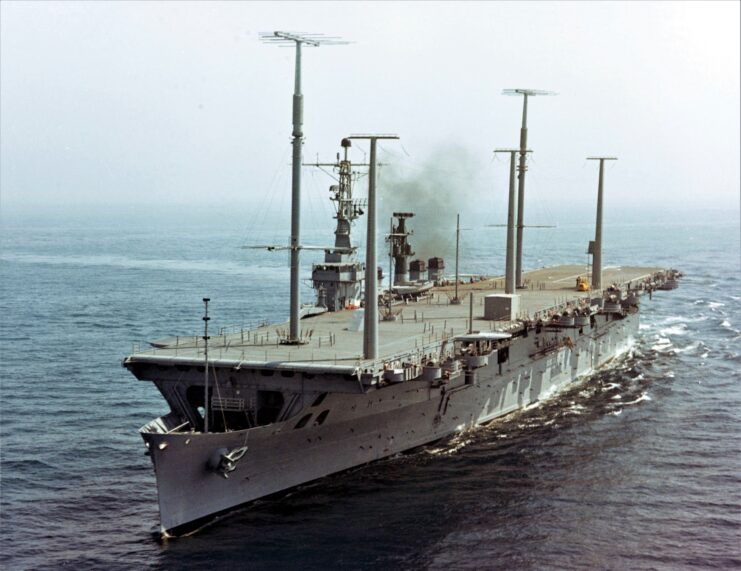
The USS Wright (CVL-49/AVT-7/CC-2), a Saipan-class light aircraft carrier, entered service with the U.S. Navy on February 9, 1947. Initially, she was primarily used as a training platform, where countless pilots practiced and earned their carrier landing qualifications. Over the course of this period, Wright completed 40 short cruises dedicated to these training missions.
On January 11, 1951, the ship set sail from Norfolk, Virginia, bound for the Mediterranean to join the U.S. 6th Fleet. She reached Gibraltar ten days later on January 21, officially kicking off her first overseas assignment. Following a maintenance period in 1952, Wright became the flagship of Carrier Division 14, where she took part in joint exercises with NATO forces, including maneuvers alongside the British Royal Navy.
In 1953, after another maintenance stint, Wright left the Philadelphia Naval Shipyard to embark on a new tour with the U.S. 7th Fleet in the Pacific. She made her way through the Panama Canal, stopping at San Diego and Pearl Harbor before arriving at Yokosuka, Japan. While carrying Marine Attack Squadron 211, she conducted operations off Korea and around Okinawa.
Wright’s deployment concluded on October 15, 1954, when she departed Japanese waters and headed back to the West Coast of the United States. Soon after returning, she began deactivation preparations and was formally decommissioned, entering the Pacific Reserve Fleet.
Serving with the National Emergency Command Post Afloat (NECPA)
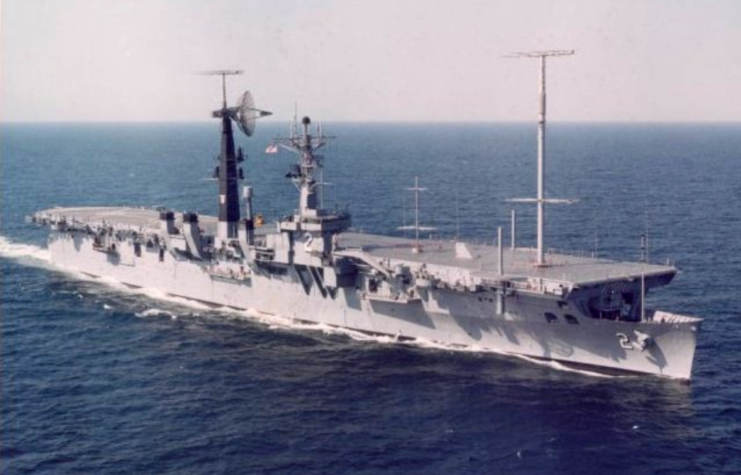
On March 15, 1962, the USS Wright was converted into a command ship and redesignated CC-2. Although it held this designation for only a year, the ship received major upgrades. The hangar bays were turned into command centers, complete with elegant accommodations meant for the president. Its former flight deck was repurposed to hold antennas on large masts, although the Wright still had the ability to launch and land helicopters from the rear.
After being recommissioned on May 11, 1963, the Wright operated off the West Coast before eventually relocating to Norfolk. As a part of the National Emergency Command Post Afloat program, the ship—nicknamed “Zenith”—was described as “the most sophisticated communications platform ever placed at sea.”
Ironically, Wright’s most notable operations had little to do with its intended emergency role. From April 11–14, 1967, it provided communications support for President Lyndon B. Johnson during a summit in Punta del Este, Uruguay. Then, on May 8, 1968, the ship helped tow the USS Guadalcanal (LPH-7) 84 miles to safety after it experienced mechanical problems.
During the Pueblo Crisis in February 1969, the Wright was placed on high alert while docked in Norfolk, but it was never called into action. The ship was officially decommissioned on May 27, 1971.
National Emergency Airborne Command Post (NEACP)
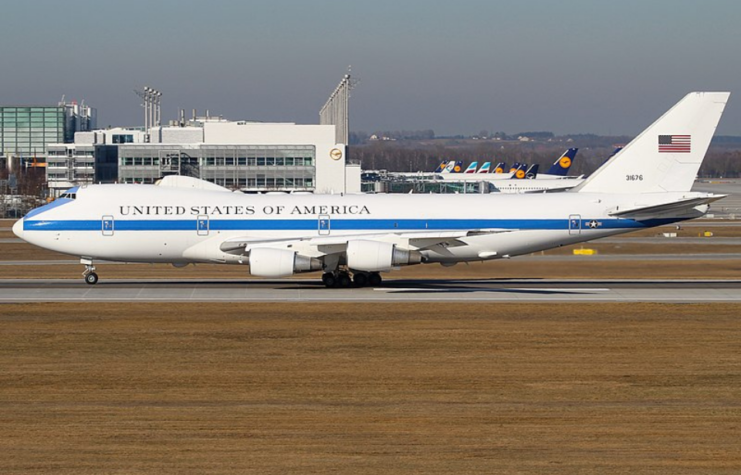
During the 1960s, U.S. officials examined the potential of adding a third ship to the National Emergency Command Post Afloat program. Candidates for conversion included the USS Triton (SSRN-586) and a Saipan-class carrier. However, the initiative was ultimately shelved when it was determined that a third vessel wasn’t a necessity. Consequently, only the USS Northampton and USS Wright fulfilled the role of seaborne command posts until both were decommissioned in the 1970s.
Attention soon turned away from naval expansion and toward air-based solutions. This pivot gave rise to the National Emergency Airborne Command Post, which centered around the Boeing E-4—a heavily modified version of the 747. Four aircraft were constructed in total, beginning with the E-4A entering service in 1974 and followed by the enhanced E-4B model in 1980. By the mid-1980s, the entire fleet had been upgraded to the E-4B standard.
Despite its resemblance to civilian airliners, the E-4B is built for crisis. It features robust satellite communication capabilities, equipment designed to resist electromagnetic interference, and protective systems to endure nuclear and thermal impacts. These attributes make it a vital airborne hub, ready to direct national defense and government operations during emergencies.
More from us: Messerschmitt Me 410 Hornisse: The German Bomber Destroyer That Was No Match for Allied Fighters
The U.S. Air Force continues to rely on the E-4B “Nightwatch” as a cornerstone of its airborne command and control network. Despite its age, the aircraft remains operational and indispensable due to its pivotal role in national security. Although work on a successor—under the Survivable Airborne Operations Center (SAOC) initiative—gained momentum around 2021 and 2022, the E-4B remains fully functional and mission-ready.
Complementing the E-4B are the two Boeing VC-25 aircraft, better known as Air Force One when transporting the President. Beyond their primary role in executive travel, these planes are outfitted with hardened communication and defense capabilities, allowing them to operate as alternate command platforms if needed. Together, they reinforce the resilience of America’s airborne leadership infrastructure during national emergencies.
